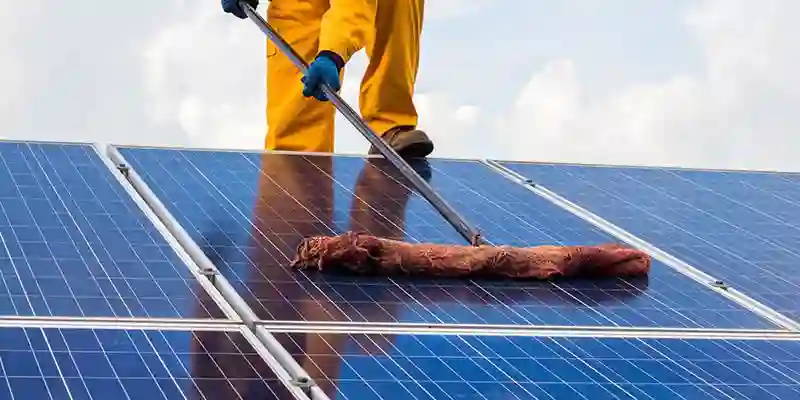Solar energy has emerged as a vital player in the global transition to renewable energy sources. As the demand for cleaner and more sustainable energy solutions grows, so does the need for innovations in solar panel technology. Over the years, researchers and engineers have been hard at work developing new and exciting ways to harness the power of the sun. From transparent solar cells that can turn windows into energy generators to solar paint that can transform any surface into a solar panel, the world of solar energy is evolving at an astonishing pace. In this article, we will explore some of the most groundbreaking innovations in solar panel technology and their potential to revolutionize how we generate and use clean energy.
- Transparent Solar Cells: One of the most intriguing recent developments in solar panel technology is the creation of transparent solar cells. Traditional solar panels are typically dark and opaque, making them suitable for rooftops or solar farms but not for integration into everyday objects. Transparent solar cells, on the other hand, are designed to be see-through and can be used in a wide range of applications.
These transparent solar cells use advanced materials, such as organic photovoltaic materials or transparent conductive oxides, to capture sunlight while still allowing visible light to pass through. This technology holds immense promise for building-integrated solar solutions. Imagine windows in skyscrapers, car windshields, or even smartphone screens that can generate electricity from sunlight without obstructing your view.
Companies like Ubiquitous Energy and SolarWindow are actively working on bringing transparent solar cells to the market. While there are still challenges to overcome, such as improving efficiency and durability, the potential for widespread adoption is truly exciting.
- Solar Paint: Imagine being able to paint your house with a special solar paint that turns your entire exterior surface into a solar panel. This innovative concept is becoming a reality, thanks to research in the field of solar paint.
Solar paint is a liquid substance containing tiny light-absorbing particles, such as perovskite materials or quantum dots, that can be applied to various surfaces like walls, roofs, or even vehicles. When exposed to sunlight, these particles generate electricity, effectively turning the coated surface into a solar panel.
The advantages of solar paint are numerous. It can be applied to irregular or curved surfaces, making it highly adaptable. Additionally, it can blend seamlessly with the aesthetics of buildings and structures. Researchers are actively working on improving the efficiency and longevity of solar paint, and companies like SolarPaint are pushing the boundaries of this technology.
- Flexible Solar Panels: Conventional solar panels are typically rigid and heavy, limiting their application to specific locations and structures. However, flexible solar panels are changing the game by offering versatility and portability.
These panels are made using thin-film photovoltaic materials like amorphous silicon, cadmium telluride, or organic photovoltaics, which are deposited on flexible substrates such as plastic or metal. The result is lightweight, bendable solar panels that can be integrated into a wide range of products and surfaces.
Flexible solar panels can be used in innovative ways, such as being integrated into clothing, backpacks, or even rollable solar blankets for camping and outdoor activities. They are also well-suited for curved or irregularly shaped surfaces, opening up new possibilities for solar installations.
- Solar-Integrated Building Materials: Solar panels have traditionally been added to existing structures, often as an afterthought. However, a new generation of building materials is emerging that incorporates solar cells directly into the construction elements themselves.
Solar roof tiles and solar shingles, for example, are designed to replace conventional roofing materials while generating electricity from the sun. These solar-integrated building materials not only capture solar energy but also enhance the overall aesthetics of the building. Companies like Tesla with their Solar Roof and CertainTeed with their Apollo II solar shingles are making strides in this area.
Another innovative approach is the development of solar bricks or blocks that can be used for constructing walls and pavements. These bricks are embedded with solar cells and can generate electricity while maintaining the structural integrity of the building.
- Biologically Inspired Solar Panels: Nature has always been a source of inspiration for scientific innovation. Researchers are now looking to biological systems to design more efficient and sustainable solar panels.
For instance, biomimetic solar panels are inspired by the way plants convert sunlight into energy through photosynthesis. These panels incorporate artificial chlorophyll-like molecules that can capture a broader spectrum of sunlight and convert it into electricity more efficiently than traditional silicon-based panels.
Another fascinating development is the use of biomaterials, such as melanin or bacterial proteins, to create solar panels that are biodegradable and environmentally friendly. These panels have the potential to reduce the environmental impact of solar panel manufacturing and disposal.
- Tandem Solar Cells: Tandem solar cells are a breakthrough technology that increases the efficiency of solar panels by stacking multiple layers of different materials on top of each other. Each layer is designed to capture a specific range of sunlight wavelengths, allowing for more efficient energy conversion.
By combining materials like silicon and perovskite in tandem solar cells, researchers have achieved significant efficiency improvements. These cells can generate more electricity from the same amount of sunlight, making them a promising technology for the future of solar energy.
- Printable Solar Panels: Printable solar panels, also known as “solar inks” or “solar paint,” use advanced printing techniques to deposit thin layers of solar-absorbing materials onto various substrates. This technology enables the mass production of low-cost, lightweight, and flexible solar panels.
The potential applications for printable solar panels are vast, ranging from clothing with integrated solar cells to large-scale solar farms. Additionally, the manufacturing process is less resource-intensive compared to traditional solar panel production methods.
Conclusion
The world of solar panel technology is evolving rapidly, with innovative developments that promise to revolutionize how we generate and use clean energy. From transparent solar cells that seamlessly blend into our surroundings to solar paint that can transform any surface into a power generator, these advancements are opening up new possibilities for a sustainable future.
As these technologies continue to mature and become more accessible, the adoption of solar energy is expected to skyrocket, reducing our reliance on fossil fuels and helping combat climate change. Whether it’s in the form of transparent windows, solar-integrated clothing, or biodegradable solar panels, solar innovations are paving the way for a greener and more sustainable world. The future of energy is indeed looking brighter, thanks to these groundbreaking solar panel innovations.


